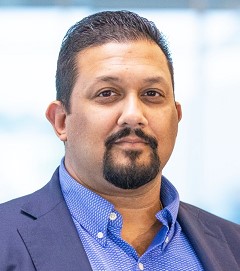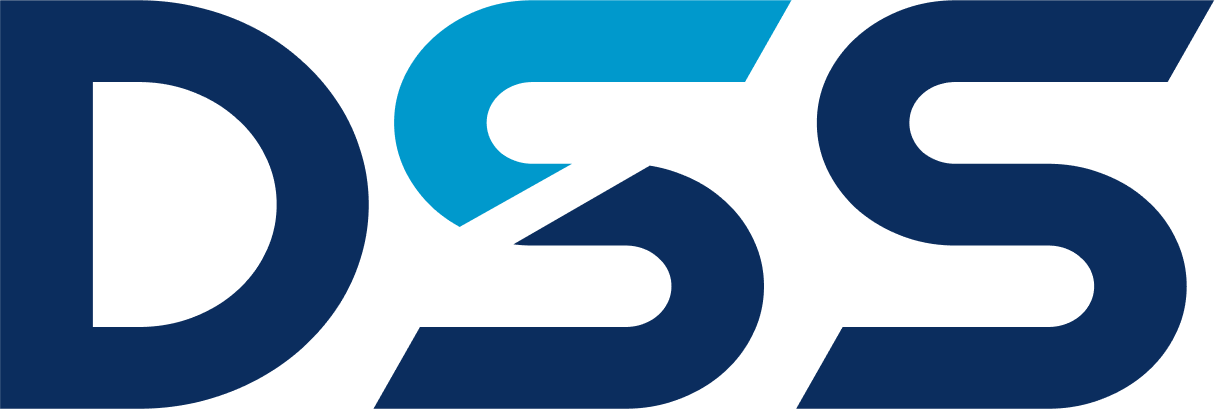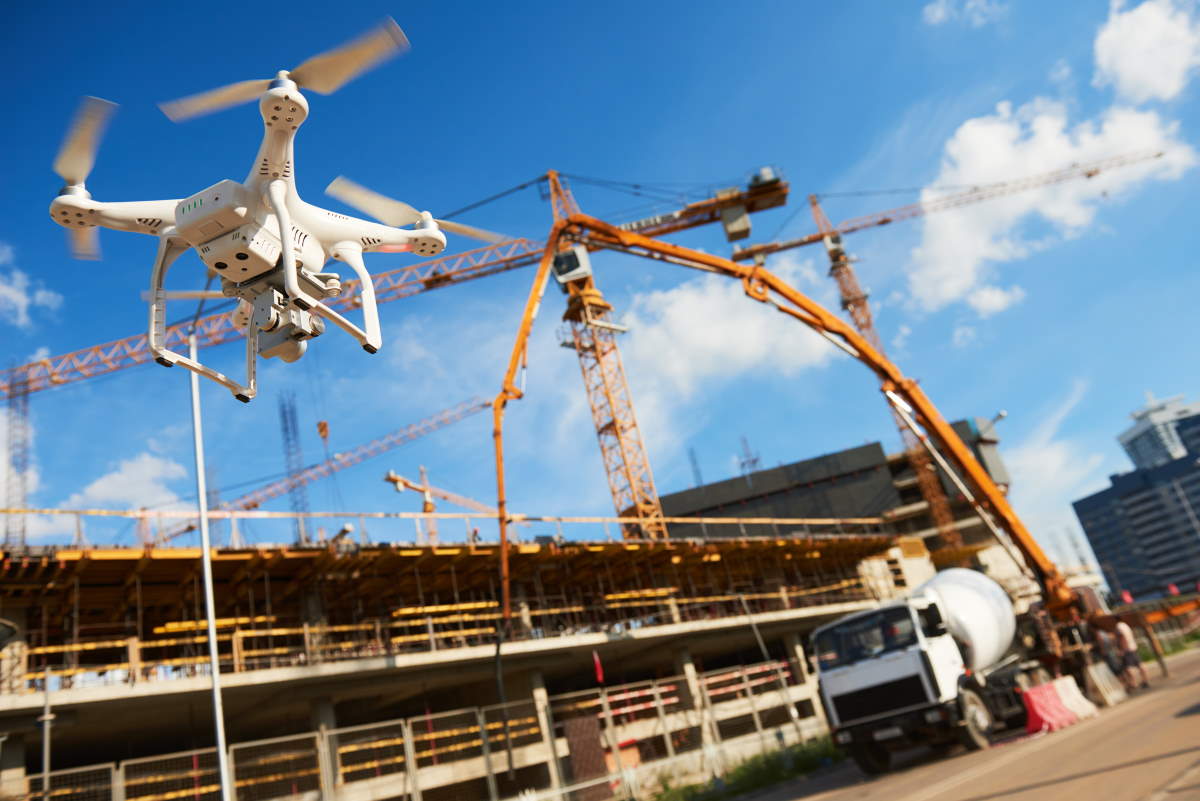Use Cases from the Field to Back Office and the Microsoft Tools That Bring Them to Life
Ajoy Bhattacharya, Microsoft Director, Account Technology Strategist
Interview by: Sarah D. Morgan, SIS Senior Marketing & Brand Manager | Feature Writer

THESIS Q&A is happy to introduce construction industry expert and Microsoft Director, Account Technology Strategist, Ajoy Battacharya. Here, Ajoy answers questions about AI in Construction and breaks AI down into two components, the broader AI including Machine Learning and Deep Learning, which have been around for many years. And then the newly introduced Generative AI. In this THESIS Q&A, you’ll read use cases from construction site scenarios and the project process involving both types. The common theme among all scenarios is efficiency which is where Ajoy brings his AI and construction technology expertise.
Q: Ajoy, how did you get into construction technology?
A: My background in technology is managing infrastructure, security and operations teams with a background in Six Sigma process efficiency. I began at Suffolk Construction in 2014 as Director of IT and then Senior Director of Innovation New Technology. Suffolk asked me to look at the technology landscape and build something scalable for the future that would allow Suffolk to build quickly, be dynamic, be elastic, and be able to scale across all job sites.
It was there I got into partnership with Microsoft to essentially host Suffolk’s data center in the Azure cloud to move away from the operational overhead of maintaining a data center.
I was then promoted into an Innovation role as Sr. Director of Innovation and New Technology. Since I managed the IT field staff, I was familiar with operations on a jobsite. I always look for what we can do better for improved outcomes. I was able to quickly capture what needed to be improved and in my role at Microsoft I am able to bring those insights to the broader industry.
Q: What is your role at Microsoft?
A: I’m a Director, Account Technology Strategist. For my clients, I roadmap and strategize what technology to apply, what technology needs implementing, and ways we make that happen based on the client’s requirements. I take part in strategizing and help advise executives through this process. I also co-host an AEC community at Microsoft focused on construction industry and related technology education. I also advise on the use AI and Fabric and ERP in AEC.
Q: Before we go into the use cases and tools, can you explain the different types of AI you’ll be talking about?
A: Yes. There are two elements here. One is the broader AI (including Machine Learning and Deep Learning), and the other is a subset of AI: Generative AI. It’s important to understand the difference between the two. I’m going to start with Generative AI because it’s really the hot topic right now. Generative AI, at a high level, allows you to be more efficient.
A construction use case are documents you need to read and analyze And here are terms and conditions you need to understand as part of the construction document sets. When you have reams of documents you need to go through, the answer is Generative AI. It’s a more efficient way to read those documents and get a summary which makes you more efficient and compliant.
Q: So that’s Generative AI. What do you say about AI proper?
A: AI has been around for decades. An example of AI use in construction are sensors at a site to detect water leakage or humidity or decibel meters that can alert you. There are tools that look at pictures ad videos and try and tell you if somebody is missing a hard hat on the job or general conditions are at risk. I think over time these tools can get better and be more predictive. And predictability is the key to minimizing risk in the field and in the back office.
AI helps reduce those safety issues. This can potentially lead to ensuring higher safety and possibly lowering insurance. Another example of AI is what Boston Dynamics is doing with the robotic dog taking pictures and updating a plan based on what it’s capturing. That’s AI making the process more efficient.
Q: What about AI for ERP? And are we talking about Generative AI or AI proper for these applications?
A: When I think of ERP and of what’s going on in the world today, the cost of construction, the cost of materials, the cost of labor are all rising. We need to find ways to make it more efficient to get these costs down otherwise the costs to the consumer, whether it be a company or retail or even a home buyer, is skyrocketing. It’s not affordable and it won’t be affordable to even develop.
We must find ways to create efficiencies and bring those costs down. And I think AI will play a huge part in that. I believe you will see a race to build AI models specific to construction and design. Businesses will need to innovate to stay ahead of the cost of construction. This can have huge implications to the supply demand equilibrium and have long term effects on real estate.
Q: Can you give examples of how and AI and ERP can help with this problem?
A: A simple example is where I can see a supplier of materials on a job collaborating with the general contractor ensuring they understand the project plan and the timing of delivery or possible delays. With AI the general contractor can understand the delay sooner and they can work around the project plan to see what else they could do while potentially waiting for materials. That’s a use case where AI could help.
I think Generative AI and AI tools are out there to help architects in building plans faster and working with the general contractors to implement them on a job site. Currently it takes 9 to 12 months to design a building. I believe AI, specifically Gen AI, can make that process go faster and create more predictable plans today and de-risk building plans based on historical data.
Q: What about within the process flow of a project life cycle?
A: If you look at the construction process when we break ground, we have a certain Level of Design. These design documents get more specific as the building process continues and the project plan becomes more specific. During the construction phase there often are external forces like weather, materials, and labor force, which affect a plan. AI can help by aggregating the data and provide a better understanding of that data mathematically by looking at correlations and regressions models to see what is the confidence level of meeting a particular task?
Q: The project phases, starting with bid, what do you see for AI?
A: When you think about the process of construction and the bid phase, I’m seeing a lot of use cases around creating bids. I like to framework Gen AI into 4 categories: read, write, analyze, and design. Read, write, and analyze are probably the more mature areas right now.
In the bid phase, I’m seeing a lot of companies try to create bids based on bids they’ve used before and were created in Word or as a .PDF document.
Another area I’m seeing is a resource subcategory. Wanting to know how we can pull the right resources from different parts of the country. If you’re building a particular type of building, say a hospital in California, you want resources that have built hospitals in that region. You’re probably do not want to pull somebody from a far off region unless you have to.
The use case is where we are looking for certain types of resources like a supervisor, foreman, project manager, whatever role you may have. You want to be able to look through people’s profiles and build the right team to present to that bid. What is important here is the relevance of the data. You don’t want to necessarily go back to an old bid because some of these people may not be around or are in higher roles in their careers. You want to be more exact, and I’m seeing that as a use case across many general contractors.
Q: What about other phases?
A: Another use case I’m seeing is where we take data from the contracts and from any terms and conditions or the schedule and turn it into a database to track everything that we need to do. So essentially, can we put that into the project plan.
Q: What about project profitability. How can AI affect project profitability.
A: That’s a tough one because project profitability is about being efficient. And here you have to use the word quality. Is it being built correctly the first time? When mistakes happen in construction you have to pay the worker for the work, they did regardless of the errors then you determine something has been done in error and then tear down and repeat.
The other side of profitability is if I say a wall needs 10 hours to build. But did it actually take 10 hours to build? Could it have been done faster? I do think there’s AI that can help with this. For example, people have tried using cameras on a job site to see if a task is being done efficiently.
However, there are challenges with these technologies. I think these areas of technology are maturing. I do see AI help with improving these technologies over time.
Q: This makes a Project Manager’s job tough. They have that tear down information immediately to make decisions with their forecast.
A: Yes, they have to track those as changes in the ERP tool as they happen. And track material loss for having to tear something down and the hours lost. Our solutions today do a good job of that and those areas where AI can help.
An example where AI can help with quality (i.e. building correctly the first time) are tools like a Hololens or an Oculus that let you see what you’re building before you build it. You can have AI give you instructions along the way to reduce the potential of a mistake.
Q: Tell us about the Microsoft AI tools that bring these use cases to life.
A: At Microsoft, part of my role is to help educate the industry about what Microsoft brings to this industry. A lot of people don’t realize that Microsoft is one of the world’s largest developers and owners of real estate, and we do a lot of construction ourselves. We are essentially an owner that works with general contractors.
On the other side, the question comes up, what is Microsoft doing in AEC? I position it a few ways. One, we have the tools to essentially bring all your digital assets together. We are that “connective tissue”. If you think about this industry, technology adoption is ongoing problem, and we make it worse by introducing more niche solution that are not integrated. Each time we introduce a new solution we need to think about the change management associated with that. On a job site, we have many different technology tools and people on a job site are overwhelmed with learning yet another tool. If we keep adding more tools that people must learn, it comes to a point where its too overwhelming for the people who need to focus on building buildings.
So how do we keep it simple? Back in 2014 I realized that Microsoft has an ecosystem of tools where your data center can be in Azure. And you can take all your data from your applications and bring it into a Data Lake. You can now use Fabric for all your data processing your data analysis, and Power BI to do your data visualization.
But to add to that, we have tools like Dynamics and to help bring that extended enterprise together along with Dynamics 365 Field Services and CRM.
And we also have devices like the HoloLens to allow you to help workers visualize what they have to do on a job site on a daily basis. We have tools like Power Apps and Power Platforms apps that tie into ERP. I have found PowerApps as a tool that helps drive adoption by keeping the data entry process easy and fast. For example, a Power App that allows you to track who’s on the job and everything that they’re doing. It would track if they were certified to be on a crane and that the certificate is valid. I think it is critical to build a frictionless cohesive end to end workflows and tools so that people on the job, no matter who it is, need to be easily able to digitally access these tools. And once they are digitally logged in, present them with exactly what they need to do so that they don’t get overwhelmed. This is a proven method that’s led to adoption of tools on a job site in this industry.
Companies have to remember, that when you ask a construction worker to go into an application and present them with 25 fields, when not all of those fields have to be completed, it’s very overwhelming for them. It’s better to build a Power App where they fill out the few fields that they need and let that Power App write that data to the application. That’s one way Power Apps can help.
Q: So how does AI and Generative AI help in this journey?
A: It becomes all about collaboration between IT resources and business resources. I firmly believe “The business does not know what IT has, and IT does not know what the business wants.” The question becomes how can we help?
In the early 2000’s we used to see people taking data from systems like financial systems and putting it in Access Databases to run the workflows they needed. IT had not idea that this was going on (what we used to call part of shadow IT). I see a synonymous working style with Power BI where you can still take sets of data and use PowerBI to run reports. However, now IT can have governance, oversight and security on the process. So, business can still take curated sets of data from a Data Lake or Data Warehouse and run dashboards based on the business requirements. Generative AI and CoPilot is going to allow business users who may not know programming languages build the exact report they need without necessarily asking the IT/Data department and be more self-served. They will do this by asking prompts in English. English is the language of AI and the new programming language.



